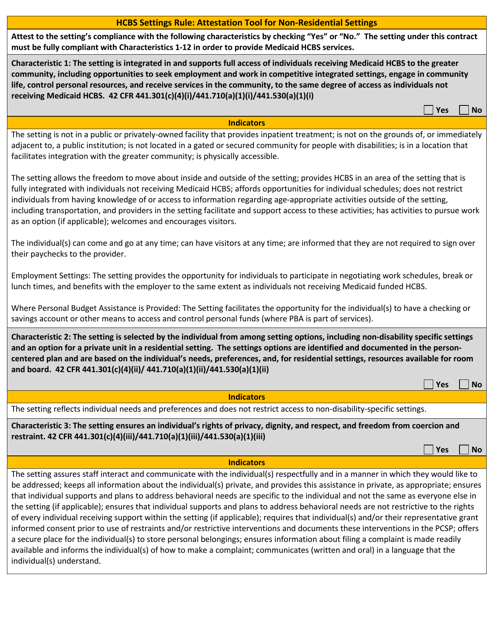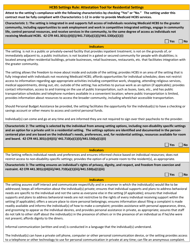Hcbs Settings Rule: Attestation Tool for Non-residential Settings - Utah
Hcbs Settings Rule: Attestation Tool for Non-residential Settings is a legal document that was released by the Utah Department of Health and Human Services - a government authority operating within Utah.
FAQ
Q: What is the HCBS Settings Rule?
A: The HCBS Settings Rule refers to a federal regulation that sets the standards for Home and Community Based Services (HCBS) provided to Medicaid beneficiaries.
Q: What is the purpose of the Attestation Tool for Non-residential Settings?
A: The Attestation Tool for Non-residential Settings is used to assess whether a setting meets the requirements of the HCBS Settings Rule.
Q: What is a non-residential setting?
A: A non-residential setting refers to a location where HCBS are provided to individuals who do not live in that setting on a full-time basis.
Q: Why is the Attestation Tool important?
A: The Attestation Tool is important because it helps ensure that non-residential settings meet the HCBS Settings Rule requirements and provide quality services to Medicaid beneficiaries.
Q: Who uses the Attestation Tool for Non-residential Settings?
A: The Attestation Tool is used by states and providers who deliver HCBS in non-residential settings to assess compliance with the HCBS Settings Rule.
Q: Does the Attestation Tool apply to all non-residential settings?
A: Yes, the Attestation Tool applies to all non-residential settings where HCBS are provided to Medicaid beneficiaries.
Form Details:
- The latest edition currently provided by the Utah Department of Health and Human Services;
- Ready to use and print;
- Easy to customize;
- Compatible with most PDF-viewing applications;
- Fill out the form in our online filing application.
Download a printable version of the form by clicking the link below or browse more documents and templates provided by the Utah Department of Health and Human Services.





